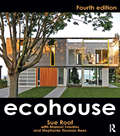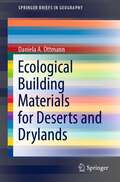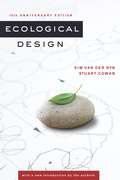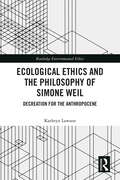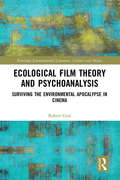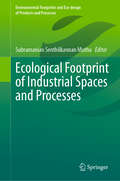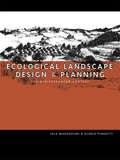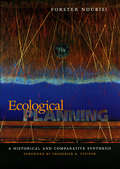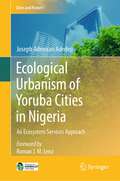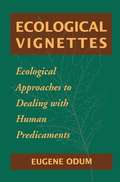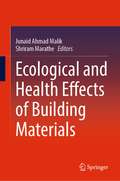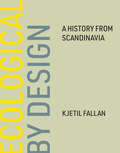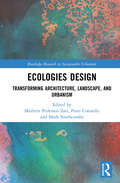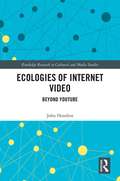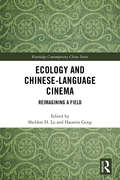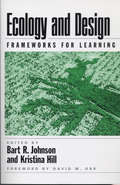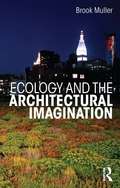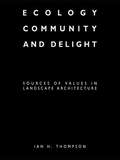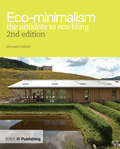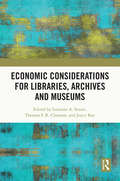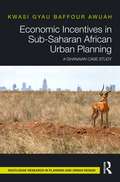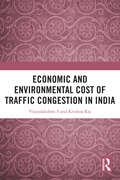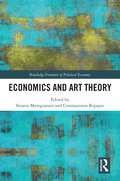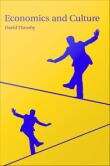- Table View
- List View
Ecohouse
by Sue Roaf Manuel Fuentes Stephanie Thomas-ReesSue Roaf is famed for her approach to design and her awareness of energy efficiency. Here she reveals the concepts, structures and techniques that lie behind the realization of her ideals. By using her own house as a case study, Roaf guides the reader through the ideas for energy-efficient design or 'eco-design'. Now in its fourth edition, the bestselling Ecohouse continues to be both a technical guide and an inspiration for thousands of architects, designers and eco-builders all over the world. Ecohouse provides design information about the latest low-impact materials and technologies, showcasing the newest and best ‘green’ solutions. Revised and updated, this edition also includes new case studies inspiring readers with more real-life examples of how to make an ecohouse work.
Ecological Building Materials for Deserts and Drylands (SpringerBriefs in Geography)
by Daniela A. OttmannThis book examines prospective climate adaptive building materials in desert and drylands in the context of climate change, desertification, urbanisation demands, and the consequent sustainable urban development challenges. This preliminary collection of ecological materials covers the characterisation of biotic and abiotic resources for materials, their specifications and benefits for adequate bio-climatic design and construction. Particular emphasis is given to ecological composite materials for advances in desert architecture. Based on the initial collection, the book culminates with potentials for new ecological building materials. The "eComposite Combinator" matrix offers potential research recipes and encourages the reader to conduct further climate-matters related research.
Ecological Design, Tenth Anniversary Edition: An Ecological Design Retrospective
by Sim Van der Ryn Stuart CowanEcological Design is a landmark volume that helped usher in an exciting new era in green design and sustainability planning. Since its initial publication in 1996, the book has been critically important in sparking dialogue and triggering collaboration across spatial scales and design professions in pursuit of buildings, products, and landscapes with radically decreased environmental impacts. This 10th anniversary edition makes the work available to a new generation of practitioners and thinkers concerned with moving our society onto a more sustainable path. Using examples from architecture, industrial ecology, sustainable agriculture, ecological wastewater treatment, and many other fields, Ecological Design provides a framework for integrating human design with living systems. Drawing on complex systems, ecology, and early examples of green building and design, the book challenges us to go further, creating buildings, infrastructures, and landscapes that are truly restorative rather than merely diminishing the rate at which things are getting worse.
Ecological Ethics and the Philosophy of Simone Weil: Decreation for the Anthropocene (Routledge Environmental Ethics)
by Kathryn LawsonThis book places the philosophy of Simone Weil into conversation with contemporary environmental concerns in the Anthropocene.The book offers a systematic interpretation of Simone Weil, making her ethical philosophy more accessible to non-Weil scholars. Weil’s work has been influential in many fields, including politically and theologically-based critiques of social inequalities and suffering, but rarely linked to ecology. Kathryn Lawson argues that Weil’s work can be understood as offering a coherent approach with potentially widespread appeal applicable to our ethical relations to much more than just other human beings. She suggests that the process of "decreation" in Weil is an expansion of the self which might also come to include the surrounding earth and a vast assemblage of others. This allows readers to consider what it means to be human in this time and place, and to contemplate our ethical responsibilities both to other humans and also to the more-than-human world. Ultimately, the book uses Weil’s thought to decanter the human being by cultivating human actions towards an ecological ethics.This book will be useful for Simone Weil scholars and academics, as well as students and researchers interested in environmental ethics in departments of comparative literature, theory and criticism, philosophy, and environmental studies.
Ecological Film Theory and Psychoanalysis: Surviving the Environmental Apocalypse in Cinema (Routledge Environmental Literature, Culture and Media)
by Robert GealThis book applies ecolinguistics and psychoanalysis to explore how films fictionalising environmental disasters provide spectacular warnings against the dangers of environmental apocalypse, while highlighting that even these apparently environmentally friendly films can still facilitate problematic real-world changes in how people treat the environment. Ecological Film Theory and Psychoanalysis argues that these films exploit cinema’s inherent Cartesian grammar to construct texts in which not only small groups of protagonist survivors, but also vicarious spectators, pleasurably transcend the fictionalised destruction. The ideological nature of the ‘lifeboats’ on which these survivors escape, moreover, is accompanied by additional elements that constitute contemporary Cartesian subjectivity, such as class and gender binaries, restored nuclear families, individual as opposed to social responsibilities for disasters, and so on. The book conducts extensive analyses of these processes, before considering alternative forms of filmmaking that might avoid the dangers of this existing form of storytelling. The book’s new ecosophy and film theory establishes that Cartesian subjectivity is an environmentally destructive ‘symptom’ that everyday linguistic activities like watching films reinforce. This book will be of great interest to students and scholars of film studies, literary studies (specifically ecocriticism), cultural studies, ecolinguistics, and ecosophy.
Ecological Footprint of Industrial Spaces and Processes (Environmental Footprints and Eco-design of Products and Processes)
by Subramanian Senthilkannan MuthuThis book describes and offers cases in the assessment of Ecological Footprint (EF) in different industrial spaces and processes. Ecological Footprint is a useful metric that measures the level of resources from the environment that are required to support a specific way of life or business. This book enumerates the concept of EF and how this concept can be applied to a variety of industrial spaces and processes including textile manufacture, electric vehicle charging, construction materials, and agriculture.
Ecological Landscape Design and Planning
by Gloria Pungetti Jala MakhzoumiBased on both research and practical experience,Ecological Landscape Design and Planning offers a holistic methodological approach to landscape design and planning. It focuses on the scarcity of natural resources in the Mediterranean and the need to aim for long-term ecological stability and environmental sustainability. The principles of this approach, therefore, can be used as a theoretical foundation for holistic landscape research, creative ecological design and better sustainable practice development.
Ecological Planning: A Historical and Comparative Synthesis (Center Books on Contemporary Landscape Design)
by Forster NdubisiChosen by Choice Magazine as an Outstanding Academic Title for 2003Ecological planning is the process of understanding, evaluating, and providing options for the use of landscape to ensure a better fit with human habitation. In this ambitious analysis, Forster Ndubisi provides a succinct historical and comparative account of the various approaches to this process. He then reveals how each of these approaches offers different and uniquely useful perspectives for understanding the dialogue between human and environmental processes. Ndubisi begins by examining the philosophies behind and major contributors to ecological thinking during the past 150 years, as well as the paradigm shift in planning that occurred in recent decades as a result of a growing global ecological awareness. He then turns to landscape suitability analysis and discusses alternative approaches to ecological planning, such as applied human ecology, applied landscape ecology, and others. Finally, he offers a comparative synthesis of the approaches in order to reveal the theoretical and methodological assumptions inherent when planners choose one approach over the other. Ndubisi concludes that no one approach can by itself adequately address the whole spectrum of ecological planning issues. For this reason he offers guidance as to when it may be appropriate for landscape architects and planners to emphasize one approach rather than another.
Ecological Urbanism of Yoruba Cities in Nigeria: An Ecosystem Services Approach (Cities and Nature)
by Joseph Adeniran AdedejiThis book offers in-depth ethnographic analyses of key informants’ interviews on the ecological urbanism and ecosystem services (ES) of selected green infrastructure (GI) in Yoruba cities of Ile-Ife, Ibadan, Osogbo, Lagos, Abeokuta, Akure, Ondo, among others in Southwest Nigeria. It examines the Indigenous Knowledge System (IKS) demonstrated for wellbeing through home gardens by this largest ethno-linguistic group in Nigeria. This is in addition to the ES of Osun Grove UNESCO World Heritage Site, Osogbo; Biological Garden and Park, Akure; Lekki Conservation Centre, Lagos; Adekunle Fajuyi Park, Ado-Ekiti; Muri Okunola Park, Lagos; and some institutional GI including University of Ibadan Botanical Gardens, Ibadan; Federal University of Agriculture Abeokuta Botanical Garden, Abeokuta; and University of Lagos Lagoon Front Resort, Lagos, Nigeria. The study draws on theoretical praxis of Western biophilic ideologies, spirit ontologies of the Global South, and largely, Millennium Ecosystem Assessment (2005) to examine eco-cultural green spaces, home gardens, and English-types of parks and gardens as archetypes of GI in Yoruba traditional urbanism, colonial and post-colonial city planning. The book provides methods of achieving a form of modernized traditionalism as means of translating the IKS into design strategies for eco-cultural cities. The strategies are framework, model, and ethnographic design algorithms that are syntheses of the lived experiences of the key informants.
Ecological Vignettes
by Eugene P OdumFirst Published in 2004. Routledge is an imprint of Taylor & Francis, an informa company.
Ecological and Health Effects of Building Materials
by Junaid Ahmad Malik Shriram MaratheThis book deals with the present adverse effects of using precarious building materials on the ecology and human health. Also, the detailed discussions on the novel and greener construction materials and their utilization as an alternative to the conventional harmful existing methods and materials are also presented in the subsequent chapters. This book helps to fill the research gaps in the existing prior-art knowledge in the field of sustainable construction and green building materials and methods giving due importance to ecology and health, specifically to the fields of sustainable structural engineering, sustainable geotechnical engineering, sustainable road engineering, etc.This book helps in achieving a sustainable environment through possible adoption of innovative and ecological construction practices. Hence, this book acts as a practical workbook, mainly for the academicians and practicing engineers who are willing to work toward the consecrated building industry.It is a well-established fact that the constructions of the engineering structures consume more and more earth resources than any other human activities in the world. In addition, the construction-related activities will produce several million tons of greenhouse gases, toxic emissions, water pollutants, and solid wastes. This creates a huge impact on environment and causes severe health issues on humans and animals. It is thus important to create an eco-friendly construction environment which can satisfy the ecological and health requirements.
Ecological by Design: A History from Scandinavia
by Kjetil FallanHow ecological design emerged in Scandinavia during the 1960s and 1970s, building on both Scandinavia&’s design culture and its environmental movement.Scandinavia is famous for its design culture, and for its pioneering efforts toward a sustainable future. In Ecological by Design, Kjetil Fallan shows how these two forces came together in the late 1960s and early 1970s, when Scandinavian designers began to question the endless cycle in which designed objects are produced, consumed, discarded, and replaced in quick succession. The emergence of ecological design in Scandinavia at the height of the popular environmental movement, Fallan suggests, illuminates a little-known reciprocity between environmentalism and design: not only did design play a role in the rise of modern environmentalism, but ecological thinking influenced the transformation in design culture in Scandinavia and beyond that began as the modernist faith in progress and prosperity waned. Fallan describes the efforts of Scandinavian designers to forge an environmental ethics in a commercial design culture sustained by consumption; shows, by recounting a quest for sustainability through Norwegian wood(s), that one of the main characteristics of ecological design is attention to both the local and the global; and explores the emergence of a respectful and sustainable paradigm for international development. Case studies trace key connections to continental Europe, Britain, the US, Central America, and East Africa. Today, ideas of sustainability permeate design discourse, but the historical emergence of ecological design remains largely undiscussed. With this trailblazing book, Fallan fills that gap.
Ecologies Design: Transforming Architecture, Landscape, and Urbanism (Routledge Research in Sustainable Urbanism)
by Peter Connolly Maibritt Pedersen Zari Mark SouthcombeThe notion of ecology has become central to contemporary design discourse. This reflects contemporary concerns for our planet and a new understanding of the primary entanglement of the human species with the rest of the world.The use of the term ‘ecology’ with design tends to refer to how to integrate ecologies into design and cities and be understood in a biologically-scientific and technical sense. In practice, this scientific-technical knowledge tends to be only loosely employed. The notion of ecology is also often used metaphorically in relation to the social use of space and cities. This book argues that what it calls the ‘biological’ and ‘social’ senses of ecology are both important and require distinctly different types of knowledge and practice. It proposes that science needs to be taken much more seriously in ‘biological ecologies’, and that ‘social ecologies’ can now be understood non-metaphorically as assemblages. Furthermore, this book argues that design practice itself can be understood much more rigorously, productively and relevantly if understood ecologically. The plural term ‘ecologies design’ refers to these three types of ecological design. This book is unique in bringing these three perspectives on ecological design together in one place. It is significant in proposing that a strong sense of ecologies design practice will only follow from the interconnection of these three types of practice. Ecologies Design brings together leading international experts and relevant case studies in the form of edited research essays, case studies and project work. It provides an overarching critique of current ecologically-oriented approaches and offers evidence and exploration of emerging and effective methods, techniques and concepts. It will be of great interest to academics, professionals and students in the built environment disciplines.
Ecologies of Internet Video: Beyond YouTube (Routledge Research in Cultural and Media Studies)
by John HondrosThis book explores the complex, dynamic, and contested webs of relationships in which three different groups of video makers found themselves when distributing their work on the Internet. It draws upon both the Deleuzian notion of "assemblage" and Actor-Network Theory, which together provide a rich conceptual framework for characterizing and analysing these webs. The groups examined are a UK video activist project, a community of film and television fans originating in the US, and an association of US community television producers. Rather than taking YouTube as its point of departure, this book centres on the groups themselves, contextualizing their contemporary distribution practices within their pre-Internet histories. It then follows the groups as they drew upon various Internet technologies beyond YouTube to create their often-complex video distribution assemblages, a process that entangled them in these webs of relationships. Through the analysis of detailed ethnographic fieldwork conducted across a period of several years, this book demonstrates that while the groups found some success in achieving their various goals as video makers, their situations were often problematic and their agency limited, with their practices contested by both human and technological actors within their distribution assemblages.
Ecology and Chinese-Language Cinema: Reimagining a Field (Routledge Contemporary China Series)
by Sheldon H. Lu Haomin GongThis edited collection explores new developments in the burgeoning field of Chinese ecocinema, examining a variety of works from local productions to global market films, spanning the Maoist era to the present. The ten chapters examine films with ecological significance in mainland China, Hong Kong, and Taiwan, including documentaries, feature films, blockbusters and independent productions. Covering not only well-known works, such as Under the Dome, Wolf Totem, Tie Xi Qu: West of the Tracts, and Mermaid, this book also provides analysis of less well-known but critically important works, such as Anchorage Prohibited, Luzon, and Three Flower/Tri-Color. The unique perspectives this book provides, along with the comprehensive engagement with existing Chinese and English scholarship, not only extend the scope of the growing field of ecocinematic studies, but also seeks to reform the means through which Chinese-language eco-films are understood in the years to come. Ecology and Chinese-Language Ecocinema will be of huge interest to students and scholars in the fields of Chinese cinema, environmental studies, media and communication studies.
Ecology and Design: Frameworks For Learning
by Kristina Hill Robert Melnick Bart JohnsonProfessionals, faculty, and students are aware of the pressing need to integrate ecological principles into environmental design and planning education, but few materials exist to facilitate that development.Ecology and Design addresses that shortcoming by articulating priorities and approaches for incorporating ecological principles in the teaching of landscape design and planning. The book explains why landscape architecture and design and planning faculty should include ecology as a standard part of their courses and curricula, provides insights on how that can be done, and offers models from successful programs. The book: examines the need for change in the education and practice of landscape architecture and in the physical planning and design professions as a whole asks what designers and physical planners need to know about ecology and what applied ecologists can learn from design and planning develops conceptual frameworks needed to realize an ecologically based approach to design and planning offers recommendations for the integration of ecology within a landscape architecture curriculum, as an example for other design fields such as civil engineering and architecture considers the implications for professional practice explores innovative approaches to collaboration among designers and ecologistsIn addition to the editors, contributors include Carolyn Adams, Jack Ahern, Richard T. T. Forman, Michael Hough, James Karr, Joan Iverson Nassauer, David Orr, Kathy Poole, H. Ronald Pulliam, Anne Whiston Spirn, Sandra Steingraber, Carl Steinitz, Ken Tamminga, and William Wenk. Ecology and Design represents an important guidepost and source of ideas for faculty, students, and professionals in landscape architecture, urban design, planning and architecture, landscape ecology, conservation biology and restoration ecology, civil and environmental engineering, and related fields.
Ecology and the Architectural Imagination
by Brook MullerBy including ecological concerns in the design process from the outset, architecture can enhance life. Author Brook Muller understands how a designer’s predispositions and poetic judgement in dealing with complex and dynamic ecological systems impact the "greenness" of built outcomes. Ecology and the Architectural Imagination offers a series of speculations on architectural possibility when ecology is embedded from conceptual phases onward, how notions of function and structure of ecosystems can inspire ideas of architectural space making and order, and how the architect’s role and contribution can shift through this engagement. As an ecological architect working in increasingly dense urban environments, you can create diverse spaces of inhabitation and connect project scale living systems with those at the neighborhood and region scales. Equipped with ecological literacy, critical thinking and collaboration skills, you are empowered to play important roles in the remaking of our cities.
Ecology, Community and Delight: An Inquiry into Values in Landscape Architecture
by Ian ThompsonThis book examines the three principal value systems which influence landscape architectural practice: the aesthetic, the social and the environmental, and seeks to discover the role that the profession should be playing now and for the future. The book integrates an investigation of historical sources with contemporary research into the beliefs and values of practitioners. The book raises questions such as: should landscape architecture aspire to the status of an art form? What is the relationship between aesthetics and ecology? Does landscape architecture have a social mission?
Ecominimalism: The Antidote to Eco-bling
by Howard LiddellIn this age of eco-bling where sustainability becomes yet another ill-defined buzz word and people rush to fix their unsuspecting buildings, with green technology badges such as wind turbines, not all such additions are as green as they first appear. This book highlights more realistic and cost effective approaches to going 'green' by showcasing 'eco-minimalism' - a good-housekeeping approach to ecological building design and specification, concentrating on less glaringly obvious strategies such as insulation, draught-proofing and the use of healthy materials. This book exposes the pitfalls of 'greenwashing' in an immediate, visually-arresting and authoritative way. The intention is to present basic tenets in a quickfire, highly accessible format not just for architects, other construction professionals and related students but everyone who cares about the sustainability of our built environment.
Economic Analysis for Property and Business
by Marcus WarrenMarcus Warren's book provides a broad coverage of economic theory, analysis and policy relevant to most undergraduate students studying economics as part of their degree. Specifically it is designed for students studying for property and business related courses and is a vital purchase for all first year students and some second year students involved in these disciplines. It is also relevant for accountancy, business and marketing students studying economics as one or two of their modules. The main feature of this book is the inclusion of an application for students on property surveying courses, building surveying courses and rural land management students as well as some pure business examples for the business students. These applications will cover the main markets for this book at the end of each theory section. The text is clear, concise and includes real life examples and case studies to back up the theory presented. It is global in its appeal, especially relevant for the UK, Europe and the Commonwealth.
Economic Considerations for Libraries, Archives and Museums
by Lorraine A. Stuart Thomas F. R. Clareson Joyce RayEconomic Considerations for Libraries, Archives and Museums provides insight into the economics of collaboration across Libraries, Archives, and Museums (LAMs) and cultural heritage funding. Drawing together a series of global reflections on the past, present and future of cross-sector approaches to preserving and promoting cultural heritage, this volume examines the economic prospects of LAMs from a variety of facets. Divided into five sections, the book covers the five most important areas in the development and sustainability of collaborative LAM projects: the digital environment; collaborative models; education; funding issues; and alternate sources of funding. Responding directly to the issue of a lack of adequate funding for maintaining and providing access to cultural heritage resources globally, the book argues that cultural heritage institutions must seek creative methods for funding and collaboration at all levels to achieve shared goals. Economic Considerations for Libraries, Archives and Museums will be of interest to all those engaged in the study of library and information science, archival studies, museum studies and digital preservation. Administrators and practitioners will also find much to interest them within the pages of the book.
Economic Incentives in Sub-Saharan African Urban Planning: A Ghanaian Case Study
by Kwasi Gyau Baffour AwuahThis book explores incentives capable of enhancing the effectiveness of urban planning systems in Sub-Saharan Africa using economic theory as a framework. It argues that urban planning is fundamental to the achievement of sustainable and resilient cities, but against the backdrop of rising levels of urbanisation and growth, poverty, informal development, and climate change, such systems are failing to be promoted and successfully maintained in the region. Across ten chapters, it analyses the connection between urban planning and socio-economic development, indicators of effective urban planning systems, and the role and influence of incentives with real-world evidence. It develops quantitative models to estimate the costs and benefits of urban planning systems, focussing on the developing world where organised data is less accessible. Using Ghana as a case study, it demonstrates a step-by-step approach on how to implement the quantitative models discussed. Economic Incentives in Sub-Saharan African Urban Planning will be useful reading for researchers, policy-makers, development agencies, and students in urban planning, sustainable development, and economics.
Economic and Environmental Cost of Traffic Congestion in India
by Krishna Raj Vijayalakshmi S SThis book explores one of the most prevailing problems of the contemporary urban world, i.e. traffic congestion and its economic, environmental, and health implications. Generally viewed as an urban menace, the problem of traffic congestion has huge economic implications, which are often overlooked by urban planners. This book examines and quantifies the costs and adverse consequences and of traffic congestion, which include emissions, loss of productive hours, fuel wastage, and the adverse effects on the health of commuters, among others. It provides a comprehensive and scientific understanding of the underlying problems of traffic gridlocks by analyzing empirical evidence from Bengaluru, a city in South India. It also offers solutions and highlights innovative measures that draw from both economic and engineering perspectives to counter and reduce the tangible and intangible costs of traffic conjestion. This book will be of interest to both academic and non-academic readers of economics, environmental economics and econometrics, transport economics, urban planning, transport geography, as well as planners and policy makers.
Economics and Art Theory (Routledge Frontiers of Political Economy)
by Stratos MyrogiannisDrawing on an interdisciplinary panel of contributors, this book presents a stimulating dialogue between economics and art theory and considers how this might aid our understanding of both areas of research. The collection explores themes which both fields share, including rationality, abstraction and model building, the nature of social reality, representation and transformation. The contributions employ a broad range of methods to investigate the links between economics and art, and their coverage includes architecture, history of ideas, art theory, literature studies and beyond. This innovative volume will be of interest to advanced students and scholars of economic theory, cultural economics, literary and art theory and it intends to be a starting point for new avenues of interdisciplinary research.
Economics and Culture
by David ThrosbyIn an increasingly globalised world, economic and cultural imperatives can be seen as two of the most powerful forces shaping human behaviour. This book considers the relationship between economics and culture both as areas of intellectual discourse, and as systems of societal organisation. Adopting a broad definition of culture, it explores the economic dimensions of culture, and the cultural context of economics. The book is built on a foundation of value theory, developing the twin notions of economic and cultural value as underlying principles for integrating the two fields. Ideas of cultural capital and sustainability are discussed, especially as means of analysing the particular problems of cultural heritage, drawing parallels with the treatment of natural capital in ecological economics. The book goes on to discuss the economics of creativity in the production of cultural goods and services; culture in economic development; the cultural industries; and cultural policy.
